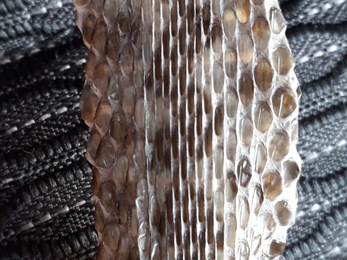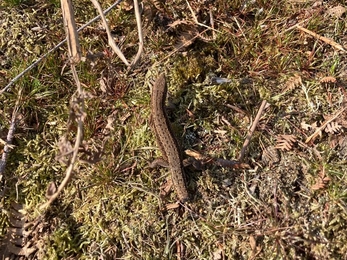Weekly wild news from our reserves - 16 April 2021
Dawn at Dingle marshes - Jamie Smith
Jamie Smith, North East Suffolk Warden, was delighted to encounter this gorgeous pair of otters whilst undertaking early morning bird surveys at Dingle Marshes.
Sun-bathing slow worms
Andrew Excell, South East Suffolk Sites Manager, recorded 12 slow worms sunning themselves at Captain’s Wood during a recent survey. The slow worm is neither a worm nor a snake, but is, in fact, a legless lizard - its identity is given away by its ability to shed its tail and blink with its eyelids. It can be spotted at this time of year basking in the sun on heathlands and grasslands, or even in garden compost heaps.
The slow worm is much smaller than a snake and has smooth, golden-grey skin. Males are paler in colour and sometimes sport blue spots, while females are larger, with dark sides and a dark stripe down the back.
The mating season for slow worms kicks off in May and males become aggressive towards each other. During courtship, the male takes hold of the female by biting her head or neck, and they intertwine their bodies. Courtship may last for as long as 10 hours! Females incubate the eggs internally, an adaptation to a cooler climate, 'giving birth' to an average of eight young in summer.
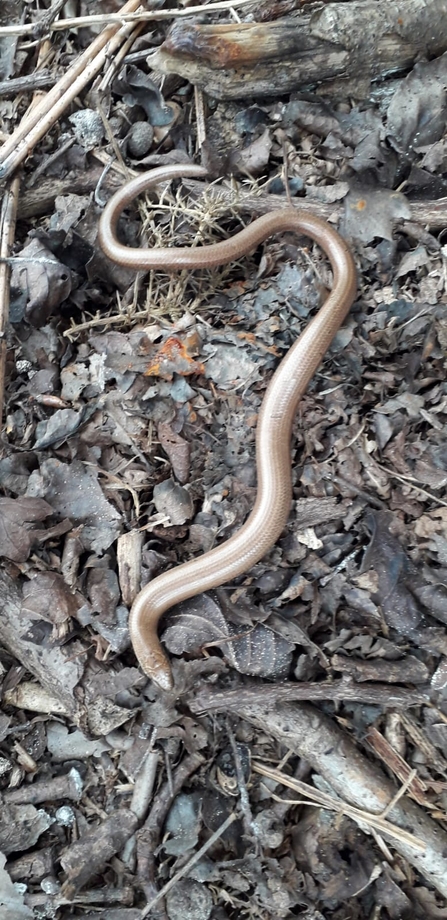
Slow worm at Captain's Wood - Andrew Excell
More reptile activity
There has also been plenty of reptile activity at Rendlesham Forest in the recent warm weather. This lovely recently sloughed adder skin was found close to active adders warming in the sun. Snakes usually shed their skin after emerging from hibernation, this allows them to grow bigger and also removes any parasites which might have been attached to the old skin. The distinctive zig-zagged pattern of the adder is thought to both act as camouflage and as a warning to predators of their venomous bite.
Also at Rendlesham, this common lizard was seen with a part of its tail missing. If threatened by a predator, the common lizard will shed its still-moving tail in order to distract its attacker and make a quick getaway. This leaves a scar behind, but it can regrow its tail, although it is usually shorter than the original.
Night time visitor
Usually unseen due to the cover of darkness, the night scope at Carlton Marshes illuminates nocturnal visitors, such as this unsuspecting fox.
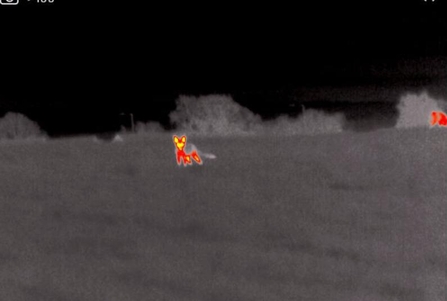
Fox at Carlton Marshes via night scope - Matt Gooch
Jawless fish
Volunteers at Knettishall Heath uncovered this rare brook Lamprey whilst clearing debris from a clogged stream. Sam Norris, Knettishall Heath Warden said ‘The brook lamprey Lampetra planeri is a primitive, jawless fish resembling an eel, and is the smallest of the lampreys found in the UK. It is a non-migratory freshwater species, occurring in streams and occasionally in lakes in north-west Europe. Like other lamprey species, the brook lamprey requires clean gravel beds for spawning and soft marginal silt or sand for their larvae. It spawns mostly in parts of the river where the current is not too strong’.
Creatures from the swamp
‘Greater tussock sedge gathered together at Market Weston Fen adorning fresh green growth look like weird creatures in a swamp - I love them!’ Words from Debs Crawford, Valley Fens Assistant Warden on her travels this week and who can argue, as these very odd towers are said to have inspired John Wyndham’s ‘The Day of the Triffids’. This ancient grass, which grows in shallow bogs in pillars up to 1.5 metres high and about a metre across, often has colonies of 20 or 30 plants close together.
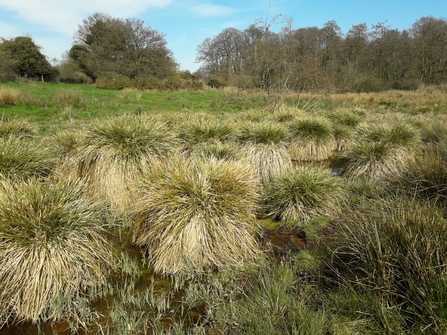
Greater tussock sedge – Debs Crawford
Where there’s sun, there’s snow!
Despite the bright sunny days we’ve been having over the last week, Sayers Breck, an area of acid grassland on the western side of Lackford Lakes, was captured on camera by warden Alex Lack with a blanket of white snow illuminated by the morning sun. Stunning!
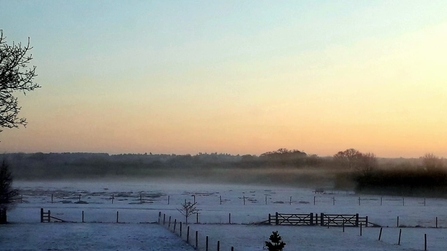
Snow on Sayer's breck - Alex Lack
Butterfly glade
Coppicing at Reydon Wood has created a diversity of structure including open areas, these allow wildflowers to flourish and are important habitat for many butterfly species.


